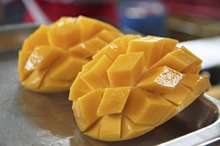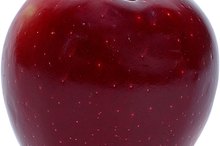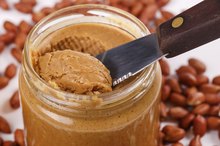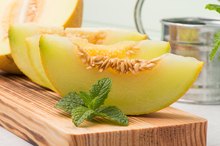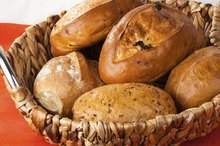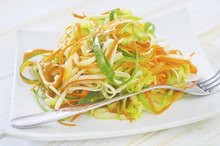What does fact checked mean?
At Healthfully, we strive to deliver objective content that is accurate and up-to-date. Our team periodically reviews articles in order to ensure content quality. The sources cited below consist of evidence from peer-reviewed journals, prominent medical organizations, academic associations, and government data.
- National Digestive Diseases Information Clearinghouse: Your Digestive System and How It Works; April 2008
- MayoClinic.com: Dietary Fiber; Essential for a Healthy Diet; Nov. 19, 2009
The information contained on this site is for informational purposes only, and should not be used as a substitute for the advice of a professional health care provider. Please check with the appropriate physician regarding health questions and concerns. Although we strive to deliver accurate and up-to-date information, no guarantee to that effect is made.
Does Fiber Prevent Calories From Being Absorbed?
Calorie absorption, or food absorption, is a term that describes the passage of food nutrients from your small intestine to your bloodstream. Absorption follows a process called digestion, which breaks your food down into pieces small enough to make absorption possible. Fiber is an indigestible form of carbohydrate that doesn’t get broken down and doesn’t interfere with food or calorie absorption.
Food Absorption Basics
Absorption takes place in the lining of your small intestine. In adults, this part of the digestive tract is roughly 1.5 to 2 inches wide and measures about 22 feet when stretched to its full length. Your intestinal lining contains numerous folds, which in turn are covered by little projections called villi. Each villi projection is covered by even smaller projections called microvilli. In combination, your small intestine’s folds, villi and microvilli provide an extensive surface area for food absorption. Specialized cells within this surface area pull in digested nutrients and deposit them in your bloodstream.
- Absorption takes place in the lining of your small intestine.
- In combination, your small intestine’s folds, villi and microvilli provide an extensive surface area for food absorption.
Fiber and Its Effects
Calories in a Slice of Whole-Grain Bread
Learn More
Fiber comes from an assortment of plant-based foods in human diets, including fruits, beans, whole grains and some vegetables. Fiber that comes from within plant cells is soluble in water; types of this soluble fiber include substances called gum and pectin. Fiber that comes from the walls of plant cells does not dissolve in water; types of the insoluble fiber include lignin, cellulose and hemicellulose. When soluble fiber passes through your system, it takes on a gel-like consistency and helps your body control its levels of blood glucose and cholesterol 2. When insoluble fiber passes through your system, it improves the speed of digestion and adds bulk to your stool 2.
- Fiber comes from an assortment of plant-based foods in human diets, including fruits, beans, whole grains and some vegetables.
- Fiber that comes from the walls of plant cells does not dissolve in water; types of the insoluble fiber include lignin, cellulose and hemicellulose.
Reduced Calorie Intake
Consumption of high-fiber foods can lead to an indirect decrease in the amount of calories available to your body, MayoClinic.com notes. When you eat high-fiber foods, you typically need to spend a considerable amount of time chewing them. This extended chewing time gives you extra time to recognize signs that your stomach is full. In turn, recognition of these signs can reduce your chances of overeating and taking on unnecessary calories. In addition, the fiber in food can increase the physical size of your meal and make you feel full for longer periods of time even when your actual calorie intake decreases.
- Consumption of high-fiber foods can lead to an indirect decrease in the amount of calories available to your body, MayoClinic.com notes.
- In turn, recognition of these signs can reduce your chances of overeating and taking on unnecessary calories.
Considerations
Mangoes & Fiber
Learn More
A number of conditions can reduce your normal ability to absorb nutrients or calories from your food. Most Americans consume a little more than one-third of the fiber recommended for good health, according to Colorado State University. Specific fiber recommendations vary with both age and gender. Consult your doctor for more information on fiber and the factors involved in calorie absorption.
- A number of conditions can reduce your normal ability to absorb nutrients or calories from your food.
- Consult your doctor for more information on fiber and the factors involved in calorie absorption.
Related Articles
References
- MayoClinic.com: Dietary Fiber; Essential for a Healthy Diet; Nov. 19, 2009
- Kids Health: Your Digestive System
- HealthCommunities.com: Absorption Disorders Overview; Types of Absorption Disorders; March 13, 2008
- Dahl WJ, Stewart ML. Position of the Academy of Nutrition and Dietetics: Health Implications of Dietary Fiber. J Acad Nutr Diet. 2015 Nov;115(11):1861-70. doi: 10.1016/j.jand.2015.09.003.
- Francesca De Filippis, et.al. High-level adherence to a Mediterranean diet beneficially impacts the gut microbiota and associated metabolome. Gut, 2015; gutjnl-2015-309957 DOI: 10.1136/gutjnl-2015-309957
- Harvard School of Public Health. http://www.hsph.harvard.edu/nutritionsource/carbohydrates/fiber/
- University of Maryland Medical Center. http://umm.edu/health/medical/altmed/supplement/fiber
- USDA.http://www.ers.usda.gov/topics/
Writer Bio
M. Gideon Hoyle is a writer living outside of Houston. Previously, he produced brochures and a wide variety of other materials for a nonprofit educational foundation. He now specializes in topics related to health, exercise and nutrition, publishing for various websites.

